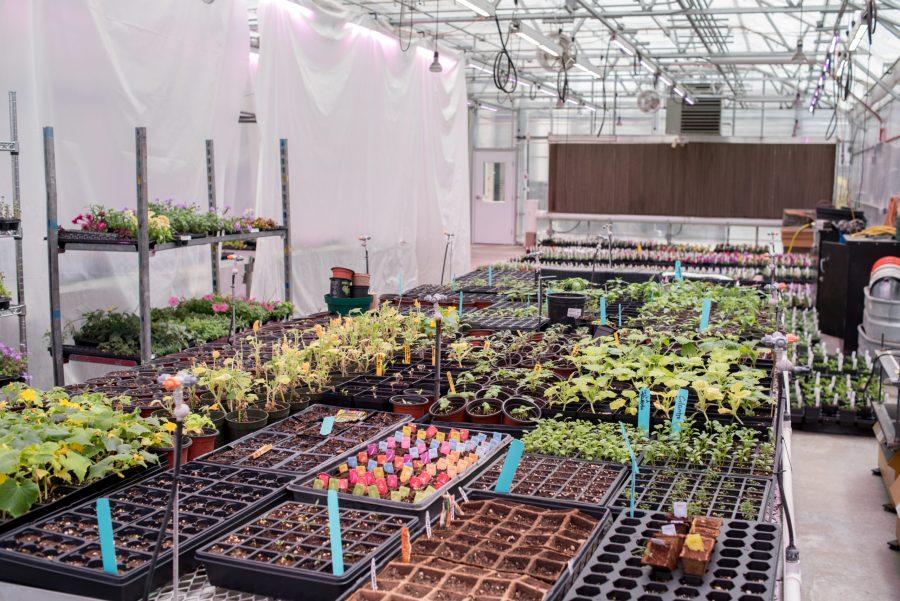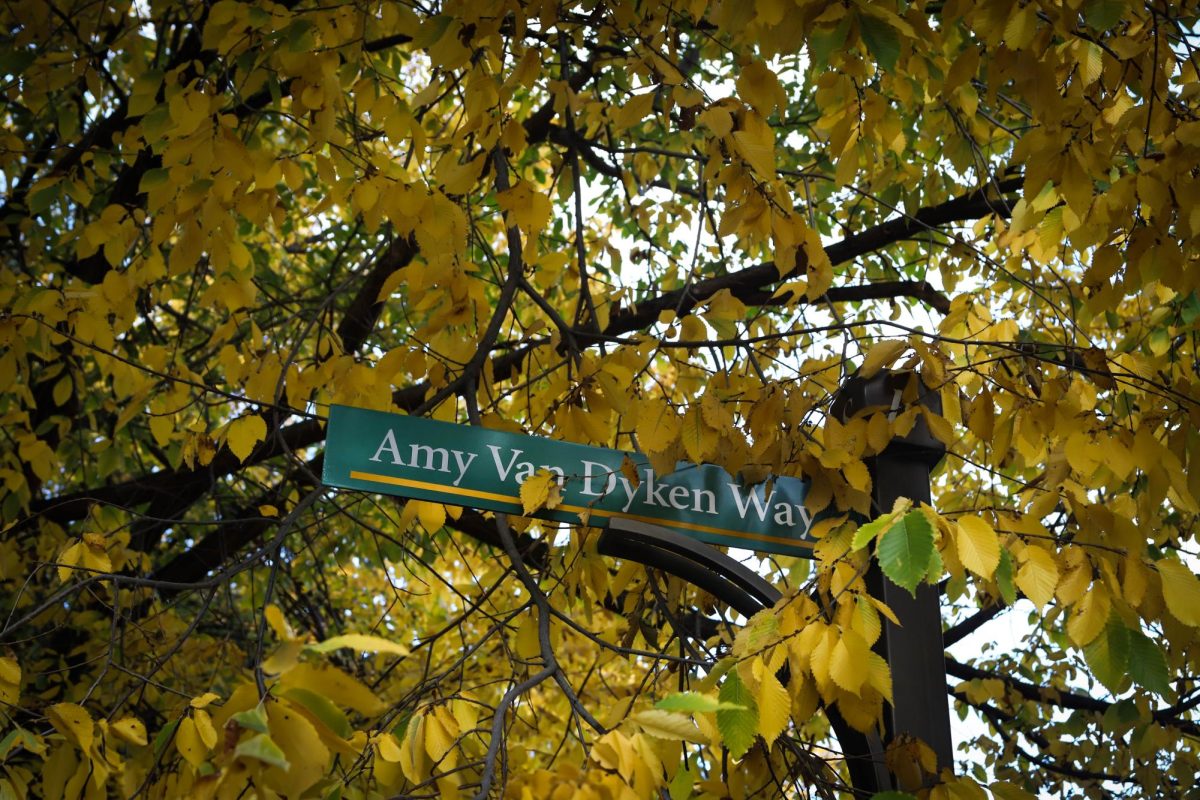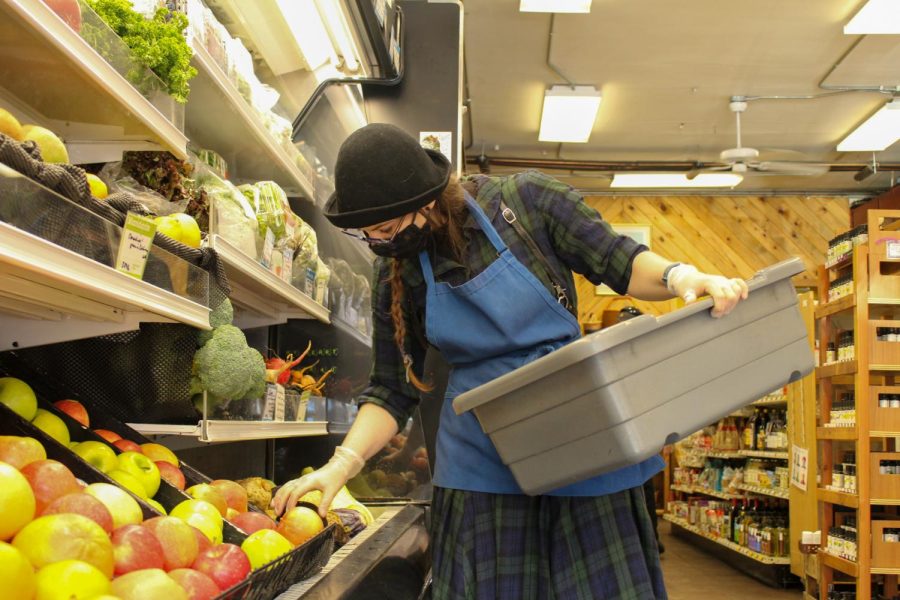As any gardener knows, good things take time. For the past two years a small group of students and staff at Colorado State University’s Horticulture Department have been waiting patiently for CSU’s Everybody Eats Garden to take off – and this year as spring is in the air, it finally has. The Everybody Eats Garden was started by a student, Linc Thomas, in 2019, with the purpose of providing an opportunity to apply the hands-on skills students are learning in their horticulture classes.
Thomas went to Mark Uchanski, a Horticulture professor, with his initial idea who recalls their first conversation, “He approached me right about this time two years ago and said, ‘I’ve rented apartments for the past three or four years, and so I don’t have a place I can garden, and as a horticulture student, it’s kind of eating away at me a little bit that I can’t practice what I’m learning about.’”

Thomas began collecting donations from the Horticulture Club, and businesses around Fort Collins, and when he ended up with much more seed than expected, he realized the garden could be more than simply an experiential learning opportunity for horticulture students. Uchanski recalls, “Right at the same time, I think folks on campus were really realizing that the joke of starving college students isn’t really a joke, it’s a real thing, food insecurity among students. And he said, ‘If we have all this extra seed and all this extra space let’s let it evolve into the Everybody Eats Garden, which is a place to grow and get experience, but with the primary goal of growing food to donate it to students.’”
“Right at the same time, I think folks on campus were really realizing that the joke of starving college students isn’t really a joke, it’s a real thing, food insecurity among students.” -Mark Uchanski, Horticulture professor
The site of the garden is a plot just outside the Horticulture greenhouses, right between several plots used for research, and the beehives kept by CSU’s Apiary Club. Now, in the second half of April, the plants are growing in the greenhouse, almost ready to be transplanted out into the garden. These plants include things such as kale, broccoli, and leafy greens – and later in the summer the garden team will plant warm season crops such as corn, tomatoes, peppers, and green beans. Most of the food finds its way to the FREEdge, a refrigerator in Aggie Village that any student can come by and pick up food. The garden has also partnered with Rams Against Hunger, a campus program against food insecurity, and on occasion donated to the Larimer County Food Bank.
All of the food grown in the garden is also produced organically, a fortunate byproduct of the plot being located next to research gardens which are certified organic.
“Organic vegetable production is a small percentage of our market when we talk about what’s available at the grocery store, so maybe we’re also shifting the narrative when we suggest we will donate organic food,” says Addy Elliott, Assistant Dean in the College of Agricultural Sciences and an instructor in the Soil and Crop Sciences program. “Oftentimes we think organic food costs the premium. And we’re providing a high-quality product to those in need.”
As a CSU alumna, Elliott’s interest in student gardens began over 20 years ago when she became involved with a student run garden CSU had then.

“It really seeded my passion for learning how to grow food with fellow students,” Elliott says. “Being able to succeed and fail, and figure things out as simple as how far apart do you plant a carrot. Some really basic things that really I would not have learned in a textbook.”
She says now of the Everybody Eats Garden, “I think it is the tip of the iceberg for learning the complexities of actually producing fresh, healthy food…It’s an opportunity for students to become empowered to grow food over their lifetime, and to be aware of food insecurity.”
2021 is the year everything has finally aligned for the Everybody Eats Garden, but it’s been a long time coming. There was a decent harvest in 2019, but few resources such as farming equipment, and limited volunteers, and in 2020 COVID-19 stopped the garden’s progress in its tracks – with students being sent home there was no one to volunteer.
“2020 was a bit of a bust,” Elliott says. “We weren’t confident how to gather safely, and it takes more than one person to manage a space like this. So last year was more of a planning year.”
“This year we have a bit more people power, and they’re hoping to recruit more volunteers and set up more infrastructure. . . This space is a lot bigger than most people’s gardens at home, so to begin to kind of mechanize it a little,” Uchanski says.
As far as people power goes, there’s a team of four students who are co-leading the operations. One of them is Robert Wiggins, a senior horticulture student, and hopes to continue at CSU in the Agriculture Masters program. Wiggins found the Everybody Eats Garden through an ad in the Horticulture newsletter.
“So I just want to be an example – I want to come out and do the work and produce the food, and feed people so that other people get inspired to do something in the community.” -Robert Wiggins, senior horticulture student
“I’m all about food justice and social justice so I’d say that’s why I got involved,” Wiggins says.
Wiggins cites CSU’s Land Grant Mission as a major component of the work being done at the garden.
“We have these pillars of community that we stand being – service, justice, and you know, making things better,” Wiggins says. “And so when we stand and say that we believe in service as a community, but our students don’t get involved in ways to serve, in ways to fight injustice, in ways to bring about equality and equity, then it starts to look like we’re not serious about it on the university level. So I just want to be an example – I want to come out and do the work and produce the food, and feed people so that other people get inspired to do something in the community.”

The garden has gone from having no budget whatsoever, to receiving significantly more donations this year, and hopes to begin receiving formal funding soon. With more resources, Wiggins and the other students hope to begin making the garden more sustainable. One goal they have for the year is to put in an irrigation system, which would allow more freedom for the garden to thrive even when students go home for the summer, or on breaks.
“We want to continue to build upon what the mission and idea was when it was started, and we want to be able to leave the space in a way that it could almost take care of itself,” Wiggins says.
The current students managing the garden are receiving a stipend for their work, and the garden hopes to continue to provide pay for those who intern.
“We understand that everyone has bills to pay,” Elliott says. “So I think it’s that we’re trying to get that education into the hands of those who desire it and overcome the barriers that may exist for those individuals to acquire the knowledge.”
Wiggins also speaks to his experience as a person of color in the agriculture industry. “There’s a large population of farmers that are not represented in the media,” Wiggins says. “We don’t know there’s Black people producing the food that helps sustain the community. And it’s kind of sad that they’re being overlooked because students go where they see themselves. So we try to open the door for a community of people of color that can come into the space, not only at CSU but any land grant university and feel like they’re doing something that’s going to benefit their community.”
Creating visibility for people of color in the agriculture industry is not only a part of Wiggin’s personal mission in his work in the garden, but inviting a diverse range of students to the table is an important aspect of the garden’s goal to build community overall.

“When you have opportunities like the Everybody Eats Garden with a common vision and mission, students come together and learn about people who may have different backgrounds,” Elliott says. “They may have different backgrounds or futures, but they come together around one goal, and that really builds a sense of belonging.”
The Everybody Eats Garden brings students together to feed other students. It provides experiential learning experience, community, and food – certainly living up to CSU’s land grant tradition of “encompassing access to education and inclusion.” But the students’ dedication goes beyond simply enriching their own experience – these students care deeply about social justice, food justice, doing their part to provide for the CSU community. They want everyone to know about the work they’re doing, and they want anyone and everyone to roll up their sleeves and get involved.
“All faculty, staff, and students are invited to come to the garden,” Elliott says. “To volunteer or to access the produce when it’s harvested. This garden encourages everyone to participate to fill their own needs, however that translates – gardening is therapy, exercise, educational, sensory stimulating and belly-filling. So everyone should feel invited, and welcome at this garden.”





































